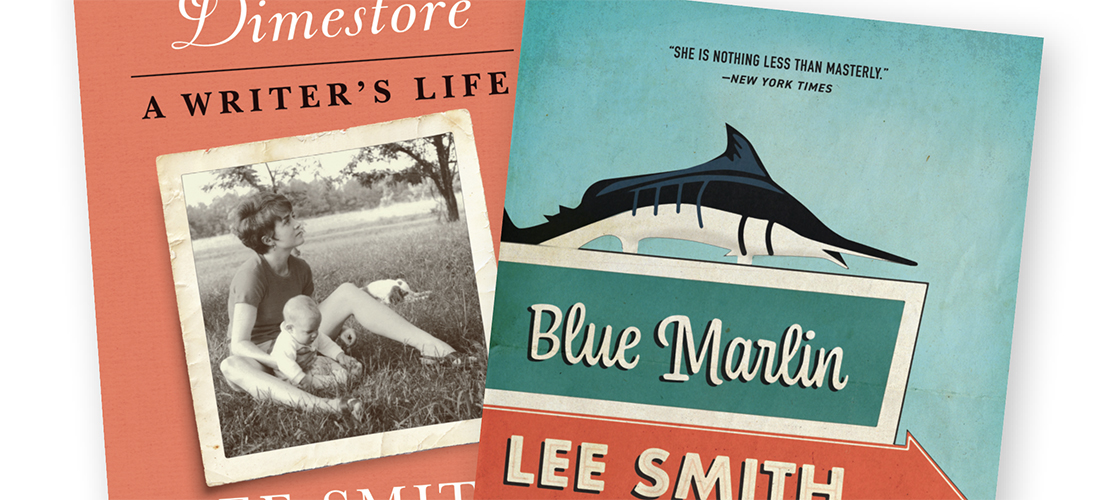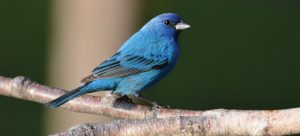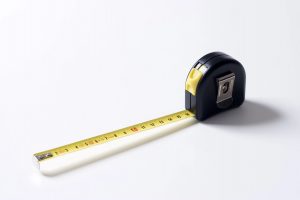
An Honest Day’s Storytelling
Finding truth in Lee Smith’s fiction and nonfiction
By D.G. Martin
Some North Carolina writers say that it is easier for them to tell the truth in fiction than it is in nonfiction. In nonfiction, the facts can bind up authors so tight that it is hard for them to deliver the truth.
The two most recent books by North Carolina’s beloved novelist Lee Smith give us a chance to compare her “truth-telling” strengths in her fiction versus her nonfiction writing. Her most recent book, Blue Marlin, which came out in April, is fiction, while her memoir, Dimestore: A Writer’s Life, was published in 2016.
The main character and narrator of Smith’s Blue Marlin is a young teenage girl dealing with growing up, religion, boys and the troubled mental health and marital problems of her parents. Much of Dimestore, Smith’s only nonfiction book, deals with the same topics in the context of the real life experiences of Smith and her parents.
Blue Marlin is short, about 120 pages, each filled with Smith’s warm and sympathetic storytelling gifts and characters who reach out and remind us of people we knew growing up.
In the book, the Lee Smith-like character, Jenny, age 13, discovered her beloved small-town lawyer dad was having an affair. Soon everybody in town knew. Her dad moved out of their home. Her depressed mom sought treatment at a hospital in Asheville. After a time, her parents decided to try to put their marriage back together on a trip to Key West, Florida, with Jenny.
Riding to Key West in the back seat of her dad’s new Cadillac, Jenny began a list of good deeds she would do on each day of their trip, “which ought to be enough,” she thought, “to bring even Mama and Daddy back together.” But, will the time in Key West do the job?
Their motel, the Blue Marlin, was a positive, not just because of its swimming pool and waterslide. The motel was occupied by a movie crew, including actor Tony Curtis. Jenny and her mom were big movie fans and read the fan magazines together. They “squealed together” over Curtis. Things were off to a good start.
Jenny settled into Key West. She walked the streets, visited the sites, made friends with the locals, and did her good deeds every day. But she’s not sure her good deeds are working. “My parents were endlessly cordial to each other now, but so far they had never slept in the same bed. I knew this for a fact. I checked their room every morning.”
To find out whether Tony Curtis’ help and Jenny’s good deeds could bring about real marital reconciliation, you will have to read the book, but Smith leaves clues in the afterword.
Following a real family trip to Key West to help her real parents’ troubled marriage, Smith writes that the Key West cure worked. “Mama and Daddy would go home refreshed, and stay married for the rest of their lives.” She writes that of all the stories she has ever written, “this one is dearest to me, capturing the essence of my own childhood — the kind of unruly, spoiled only child I was; the sweetness of my troubled parents, and the magic essence of Key West, ever since January 1959, when these events actually occurred.” Smith cautions her readers that not all the events in her book happened, describing it as “autobiographical fiction, with the emphasis on fiction.”
She explains, “I can tell the truth better in fiction than nonfiction.”
A few years ago when I read Dimestore, I thought her memoir’s real stories were, in some respects, even better than the wonderful ones she had told in her novels and short stories.
Her descriptions of the real characters in her life were, like her fictional characters, compelling. Dimestore opened the door for her many fans to know her as well or better than her good friends do.
It gave clues about how growing up in a small Appalachian coal mining town and spending most of her life working, writing and raising a family here in North Carolina have influenced her writing.
We learned that her seemingly idyllic childhood, with devoted parents, surrounded by loving members of an extended family, was also full of challenges.
In a chapter titled “Kindly Nervous,” Smith described the “immense anguish” her beloved father felt during his bouts of bipolar mania.
But for Smith there was a bright side to her father’s condition, which he described as “kindly nervous.” When her father could not sleep, he would work all night at the dimestore he owned in downtown Grundy, Virginia. Smith often accompanied him to the store and slept on a pallet under his desk. In the morning, he took her to breakfast. “How I loved those breakfasts! I got to have my scrambled eggs and my own big white china cup of sweet, milky coffee alongside early-morning truckers and the miners who’d just worked the graveyard shift, their eyes rimmed with coal dust like raccoons.”
Her mother suffered, too, and was frequently hospitalized for depression and anxiety.
But, again, Smith emphasizes the bright side. “This is my story, then,” she writes, “but it is not a sob story. Whenever either of my parents was gone, everybody — our relatives, neighbors, and friends — pitched in to help take care of me, bringing food over, driving me to Girl Scouts or school clubs or whatever else came up.”
One time, both parents were hospitalized, her mother in Charlottesville. Her mother’s doctor invited the 13-year-old Lee to have lunch with him. “Our luncheon,” she writes, “remains one of the most memorable occasions of my youth.”
After a long formal lunch with lots of conversation about Smith’s love of literature, the doctor asked her if, because both parents were ill, she was worried about getting sick herself.
Smith replied, “You mean, if I am going to go crazy, too.”
When the doctor said, “yes,” Smith thought, “How did he know? Because that was exactly what I thought about, of course, all the time.”
The kindhearted doctor assured her that he was a good doctor and she seemed to be “a very nice, normal girl, and I am here to tell you that you can stop worrying about this right now. You will be fine.”
She was fine, and explains how such events can be blessings for an author.
“This is an enviable life, to live in the terrain of one’s heart,” she writes. “Most writers don’t — can’t — do this. Most of us are always searching, through our work and in our lives: for meaning, for love, for home. Writing is about these things. And as writers, we cannot choose our truest material. But sometimes we are lucky enough to find it.”
Is Smith’s “truest material” in her fiction or her memoir? I am not sure I know the answer. But one thing is certain, whenever she puts pencil to paper, the result is going to be moving, and honest. OH
D.G. Martin hosts North Carolina Bookwatch Sunday at 3:30 p.m. and Tuesday at 5 p.m. on UNC-TV. The program also airs on the North Carolina Channel Tuesday at 8:00 p.m. and other times. To view prior programs: http://video.unctv.org/show/nc-bookwatch/episodes.





